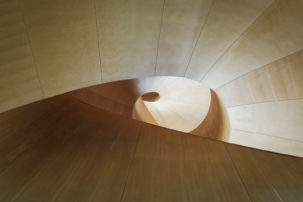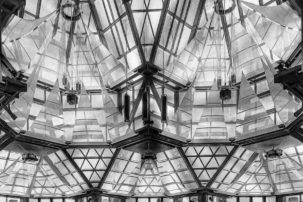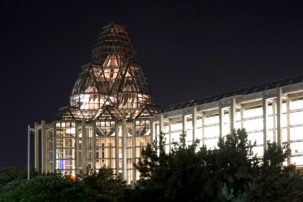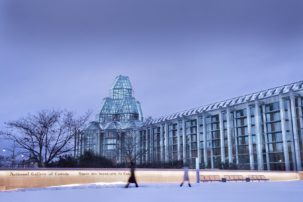Nerina Santorius is a curator at the Kunsthalle Munich, and given her job she knows a lot about Impressionism in France and Germany.
But Santorius is also aware that those dominant narratives—featuring iconic artists like Claude Monet, Pierre-Auguste Renoir and Max Liebermann—are not the end of the Impressionism story.
Now, Santorius is nurturing that wider awareness in European audiences by hosting the debut of the groundbreaking touring exhibition “Canada and Impressionism: New Horizons,” which opened in Munich last Friday.
Curated by the National Gallery of Canada’s Katerina Atanassova, “Canada and Impressionism” is the first show at the Kunsthalle Munich to focus on Canadian art.
And it’s groundbreaking in other ways too: according to the NGC, which has organized the show, it’s the first major presentation of Canadian Impressionists ever shown in Europe.
“We always try to introduce new art-historical themes and contexts to our audience,” says Santorius in an email to Canadian Art. “Although everybody is familiar with French and German Impressionism, the Canadian contribution to this worldwide movement is completely unknown in Germany.”
And unknown in many other places as well: at the press conference last week in Munich, a Belgian journalist told Atanassova that they had tried to prepare their coverage by looking up information about Impressionism and Canada—and didn’t find anything.
“If we convince ourselves and the world that two estranged words ‘Canada’ and ‘Impressionism’ must stand together,” Atanassova tells Canadian Art via email, “and write a new chapter in the history of global Impressionism, our mission is accomplished.”
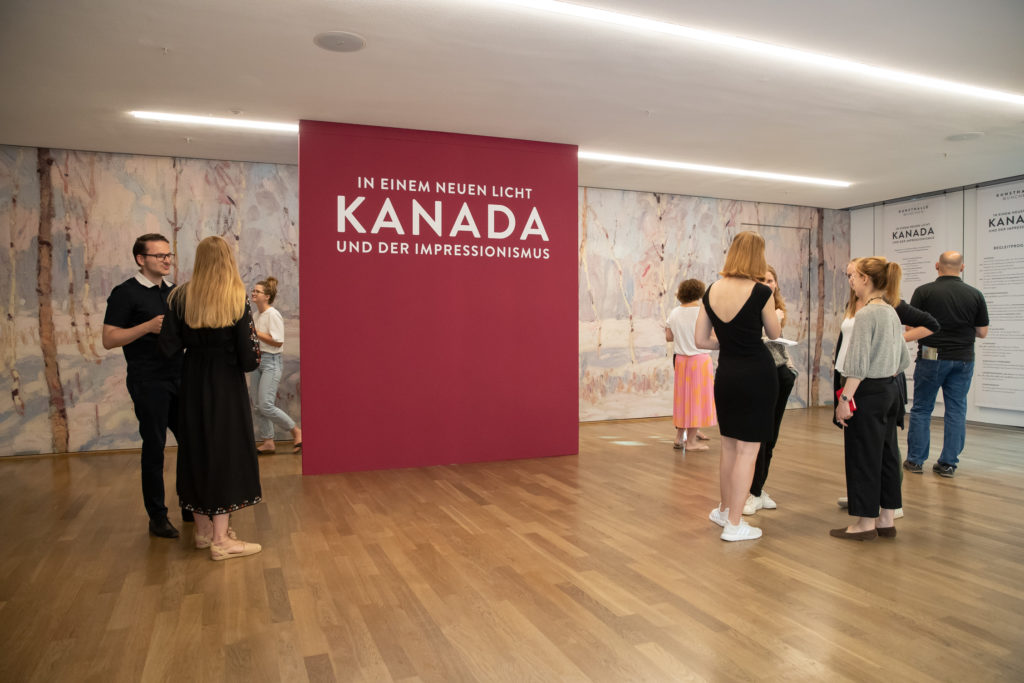
At the vernissage of “Canada and Impressionism: New Horizons” at the Kunsthalle Munich on July 18, 2019.

At the vernissage of “Canada and Impressionism: New Horizons” at the Kunsthalle Munich on July 18, 2019.

At the vernissage of “Canada and Impressionism: New Horizons” at the Kunsthalle Munich on July 18, 2019.

At the vernissage of “Canada and Impressionism: New Horizons” at the Kunsthalle Munich on July 18, 2019.

Visitors at the vernissage of “Canada and Impressionism: New Horizons” at the Kunsthalle Munich on July 18, 2019.

Visitors at the vernissage of “Canada and Impressionism: New Horizons” at the Kunsthalle Munich on July 18, 2019.

Visitors at the vernissage of “Canada and Impressionism: New Horizons” at the Kunsthalle Munich on July 18, 2019.

Visitors at the vernissage of “Canada and Impressionism: New Horizons” at the Kunsthalle Munich on July 18, 2019.

Visitors at the vernissage of “Canada and Impressionism: New Horizons” at the Kunsthalle Munich on July 18, 2019.

Visitors at the vernissage of “Canada and Impressionism: New Horizons” at the Kunsthalle Munich on July 18, 2019.
“Canada and Impressionism” features 121 paintings by 36 Canadian artists spanning five decades. “A great number of them,” says Atanassova, “have never been seen in public.”
Emily Carr, Prudence Heward, Helen McNicoll, Henrietta Mabel May, Sophie Pemberton and Mary Bell Eastlake are among the artists in the show—a fact of some significance.
“I was impressed by the artistic production of so many women Impressionist painters” in the show, says Santorius. “It is amazing to see how early the Canadian institutions—under William Brymner, for instance—opened their classes to women artists.”
Atanassova was emphatic about including women artists while she was curating the show, and showing how they contributed to the movement.
“Sophie Pemberton became the first woman to win the Prix Julian in 1899. Laura Muntz was accorded the prestigious position of studio head at the Académie Colarossi…. Helen McNicoll was elected a member of the Royal British Academy in 1913,” explains Atanassova. “These women were all trailblazers who defied Victorian conventions by choosing to pursue a professional career as artists.”
Other artists in the show include James W. Morrice, Maurice Cullen, Clarence Gagnon and Lawren Harris, many of whom travelled widely in Canada and abroad and depicted a range of landscapes.
“I was impressed by the depth and variety of the cultural legacy in the various regions which led to different approaches to landscape painting,” Santorius says. “Scenes from Quebec, for example, in which one finds a rather cultivated nature, in contrast to the ‘wilderness’ landscapes by the Group of Seven.”
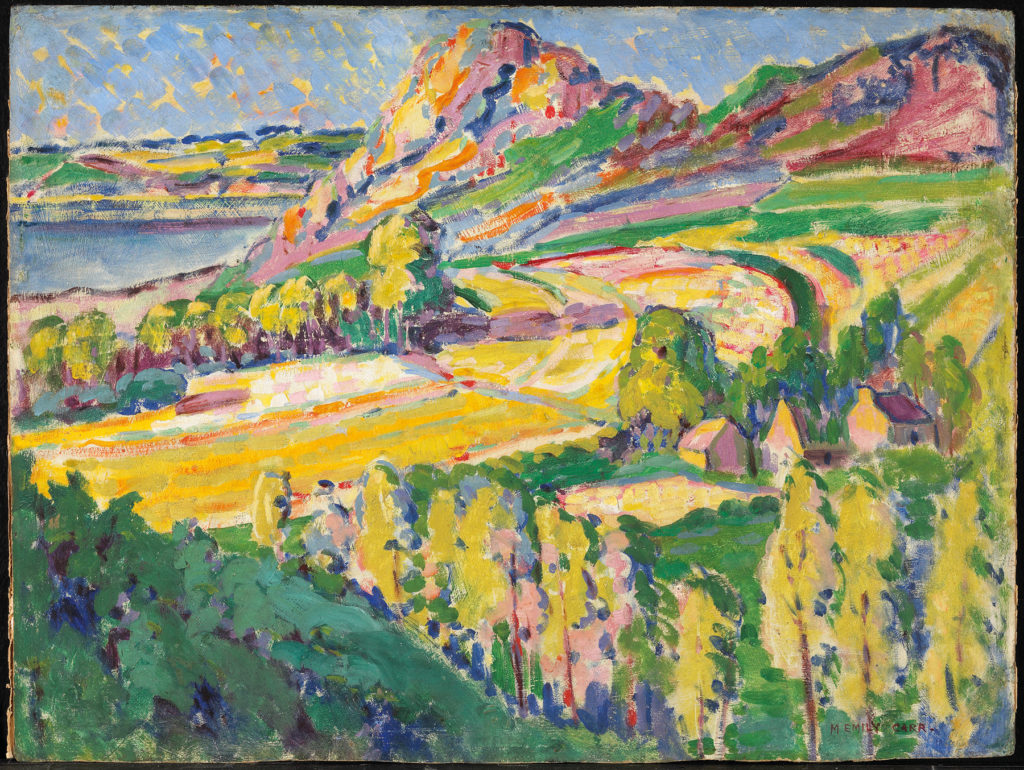
Emily Carr , Autumn in France, 1911. Oil on paperboard, 49 × 65.9 cm. Purchased 1948, National Gallery of Canada, Ottawa.

Maurice Cullen, The Ice Harvest ca. 1913. Oil on canvas, 76.3 × 102.4 cm. Purchased 1913, National Gallery of Canada, Ottawa.

Kathleen Moir Morris, After “Grand Mass,” Berthier-en-Haut, 1927. Oil on canvas, 61 × 71 cm. Montreal Museum of Fine Arts Purchase, gift of William J. Morrice (1927.479). © Estate of K. Moir Morris.

Helen McNicoll, Cherry Time, ca. 1912. Oil on canvas, 81.7 × 66.4 cm. McMichael Canadian Art Collection. Gift of Hubert B. Sceats, 1995 (1995.30.3).

Helen McNicoll , In the Tent, 1914. Oil on canvas, 80 × 59.5 cm. Private collection, Toronto.

Helen McNicoll , Sunny September, 1913. Oil on canvas, 92 × 107.5 cm. Collection of Pierre Lassonde.

Laura Muntz, The Pink Dress, 1897. Oil on canvas, 34 × 45 cm. Private Collection, Toronto.

Robert Pilot, Waiting for the Ferry, 1927. Oil on canvas, 46 × 61 cm. Private collection, Toronto.

Marc-Aurèle de Foy Suzor-Coté , Symphonie Pathétique, 1925. Oil on canvas, 124.8 × 112 cm. Musée national des beaux-arts du Québec Collection, Purchase. Restoration by the Centre de conservation du Québec (1946.05).
And the Group of Seven, while well known in Canada, also has links to Impressionism that are not often considered. That was part of what drove the creation of the show too.
“This exhibition has been a dream of mine for a number of years,” says Atanassova. “It’s part of a larger vision to place Canadian art on the global stage, following the exhibition ‘Painting Canada: Tom Thomson and the Group of Seven’ at the UK’s Dulwich Picture Gallery in 2011”—an exhibition which also toured Europe and surfaced links between the Group of Seven and Canadian Impressionists.
After “Canada and Impressionism” wraps up at Kunsthalle Munich on November 17, it will proceed to the Fondation de l’Hermitage in Lausanne for January 24 to May 24, 2020, and then to the Musée Fabre in Montpellier for June 13 to September 27, 2020.
And after that European tour, an augmented version of the exhibition, with additional archival materials and themes, will have its Canadian debut in Ottawa at the NGC. It will likely have other kinds of illuminations for audiences here too.
“I would like to see each and every Canadian feel as proud as I do,” says Atanassova, “that our artists had something great to offer to that major discourse about the spread of Impressionism around the globe.”
 Lineup outside the opening of “Canada and Impressionism: New Horizons” at the Kunsthalle Munich on July 18, 2019.
Lineup outside the opening of “Canada and Impressionism: New Horizons” at the Kunsthalle Munich on July 18, 2019.
So far in Munich, public response has been positive, with a large lineup of people stretching down the Theatinerstrasse during the vernissage of the show.
Santorius hopes that European audiences enjoy “the aesthetic experience of these atmospheric paintings…[and] also a broader perspective in Impressionism, and more knowledge about Canada and its specific historical situation in the late 19th and early 20th century.”
There are certainly many learnings here for viewers in Europe, Canada and elsewhere.
“The conditions under which the movement developed in Canada are very different from the ones in France,” Santorius points out. “No rebellion against the outdated traditions of the centuries-old academy, or the arbitrariness of the Salon jury, but the search for an ‘original’ Canadian art for a younger nation.”

 A view of the Kunsthalle Munich exterior in June 2019.
A view of the Kunsthalle Munich exterior in June 2019.
